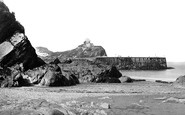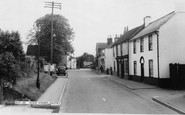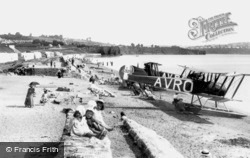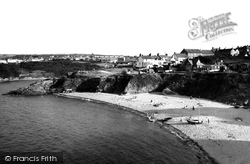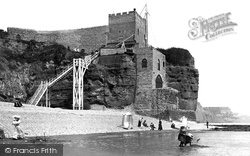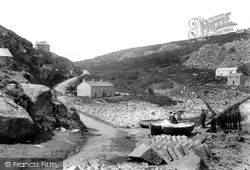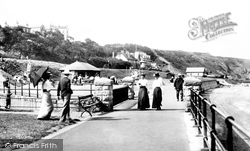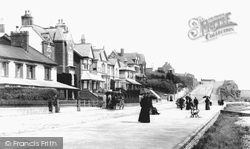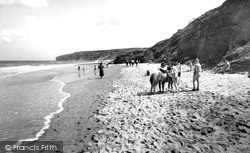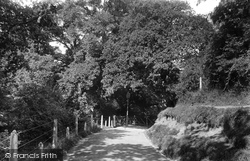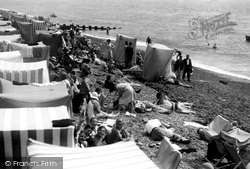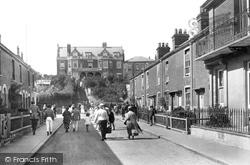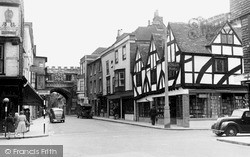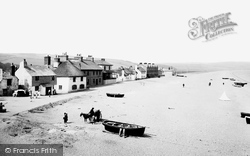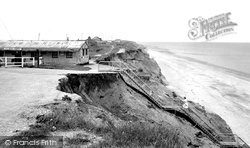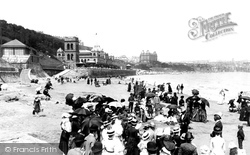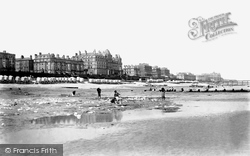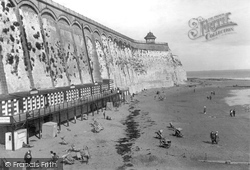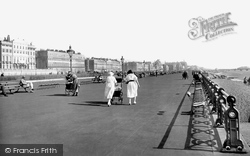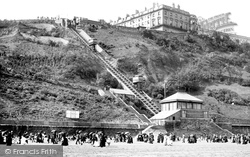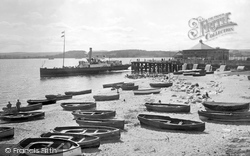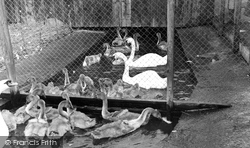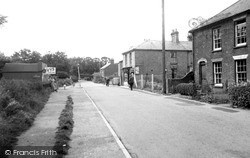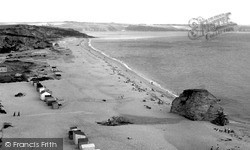Places
12 places found.
Those places high-lighted have photos. All locations may have maps, books and memories.
Photos
191 photos found. Showing results 521 to 191.
Maps
115 maps found.
Books
1 books found. Showing results 625 to 1.
Memories
1,374 memories found. Showing results 261 to 270.
I Lived In 1 Rockcliffe View Carlin How
I lived in 1 Rockcliffe View Carlin How, from about 1946 to 1952, then my father retired and we then moved to Loftus. My father was Jim Conway the Police Constable. I went to Skinningrove Senior School, was ...Read more
A memory of Carlin How in 1946 by
Morning Coffee At Rapparee
Wonderful little beach. As a lad in the late 1940's and early 50's, I was a deckchair boy here, and hundreds of people would walk from town to have a coffee at the cafe at the bottom of Rapparee steps, or spend half the ...Read more
A memory of Ilfracombe in 1950 by
Blyth Then And Now
I was born in Newsham in 1952 and then moved to Malvins Close shortly after my sister Joyce was born at the end of 1953. I t was a great place to live and Ken Dawson and I roamed all over the place: the beach, Humford ...Read more
A memory of Blyth by
My Life In Widnes
I lived in Beach Terrace until 1948 then moved to Christie Street. I went to St Bedes school and the Fisher More until 1955. I went to work at the Co-op in Albert Road,it was a great job and I made lots of friends. I love living in ...Read more
A memory of Widnes by
Hemsby In The 70s And 80s
We started holidaying in Hemsby in the late 1970s. My parents loved it as we'd always had caravan holidays previously but now we had a chalet!! They always stayed at Belle Aire site. Hemsby was pretty spartan in those days!! ...Read more
A memory of Hemsby by
Mixture
The quaint older houses on the right now faced new bungalows to our left, and on our left is another walkway to the primary school. Now Jimmy came to live in one of the bungalows and then he came to our school when he was about 10. He was from ...Read more
A memory of Eastry by
Langstone Memories
I grew up in Langstone, living at 'Longleat' on Catsash Road from 1961-1973. I attended Langstone Primary School from 1964-1969 and then Caerleon Comprehensive from 1969-1973. 'Longleat' was one of the four semi-detached ...Read more
A memory of Langstone in 1961 by
60 Years Of Denial
I was sent to this place in the mid 50s to recover after being treated for T B , I would be around 6 years old,and being from a village type environment and having no father or siblings this establishment came as a complete shock. I ...Read more
A memory of Hornsea by
Time Flies....
My father relocated our family back to England from Nyasaland (now Malawi) to Bozeat in 1962 and he became station master at nearby Castle Ashby Station. The 1959 move to Africa ended with the demise of The Commonwealth. When Britsih Railways ...Read more
A memory of Bozeat by
Postcard Of Two Girls On A Bench
I spent a lot of my childhood at Stone where my parents had a caravan. There was a postcard with two small children on a bench outside Wick Farm pub, of which I am one of the children. I am trying to find a copy of this postcard.
A memory of St Lawrence by
Captions
1,131 captions found. Showing results 625 to 648.
Seaplanes from the newly-formed Royal Air Force are pulled up on the beach - perhaps being used either for recruitment or anti-submarine duties.
The beach was used once a year by farmers from Llechryd for a feast.
At the foot of the ladder today, there is a short promenade with beach huts.
The walk along the fern-fringed lane to the rocky beach is unforgettable. The Newlyn artists were enthusiastic visitors here.
Its picturesque position on the cliffs of one of the noblest bays on the east coast of England, and its fine beach, along with its splendid hotels and handsome private houses, make Filey one of the most
Its own beach is sandless and full of large pebbles, which seem to sing as the tides play across them. It gets its name from the salterns, or salt pans, used by the monks of nearby Otterton Priory.
Situated at the southern end of Filey's long beach, the outcrop of Flamborough Head can be seen in the distance.
Such were the number of visitors navigating the overgrown and makeshift route from the town centre to the beach that the Windsor estate prioritised the construction of a more permanent path.
Its own beach is sandless and full of large pebbles, which seem to sing as the tides play across them.
There are plenty of changing tents on this beach, where a group of boys wave at the camera (centre foreground).
In this picture, guests are returning from the beach and are processing up to the hotel in order to get changed in time for their evening meal, which was often accompanied by soothing live music.
Street furniture is changing with the introduction of the ugly concrete street lamp post outside the timber-framed building that was Beach's bookshop.
More Americans died training here than were killed on Utah Beach on D-Day.
Here a lady can be seen trying to coax a child down the steps to the beach.
One Victorian dress would provide enough material for a dozen or more outfits today, when bikinis rule the beach.
The edge of the beach is lined with bathing machines in this view.
It was more popular with the locals, because it was away from the main beach. The prominent building on the cliff was part of Victoria Gardens.
These days, happily, the only active defences to be found at the resort are sand castles on the beach.
It deliberately provided fewer mass entertainment facilities than Brighton, which presumably accounts for the nearly deserted promenade and beach we see in this picture.
The tramway offered holiday-makers an alternative means of escape from the beach to the Esplanade, other than by the 224 steps cutting through the Spa Gardens, and all for just 1d.
A steamer sets out from Exmouth Pier, watched by boatmen on the nearby beach.
The Fleet, a strip of brackish water between the Chesil Beach and the shoreline, gives a safe haven to all kinds of wetland fowl, including at one time a stray flamingo.
This view is from the beach towards the village. The road was developed in the Victorian period, and most of the houses and shops, like those on the right, are of that date.
As at Par, the Crinnis Beach is also largely a result of the deposition of waste from the mining and china clay industries.
Places (12)
Photos (191)
Memories (1374)
Books (1)
Maps (115)



